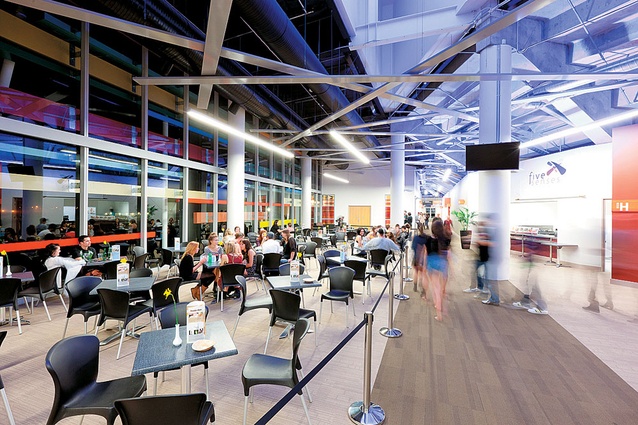Claudelands Events Centre
Hamilton used to be the city that we all tended to avoid but things are changing for the better. Recent changes to the motorway north of the city meant that the ‘by-pass’ signposts disappeared, transporting travellers unexpectedly into the heart of the city. Conversely, signposts for Claudelands Events Centre are plentiful in Hamilton, which seems indicative of the regard the city places on the project.
Hell-bent on growing an events-based economy, Hamilton’s ‘joke’ brief to the architect was to build a ‘world-class event centre on a Hamilton budget’.
As part of the process, the team also worked with the City Council to develop the country’s first community benefit proposition – supporting local jobs, education and purchasing – an initiative Chow:Hill’s managing director Tony Flannery had seen work effectively in his northern England home of Manchester.
The project is a transformation of an existing events and community facility; the reused shell includes a concert and sports arena, a two-level conference centre, exhibition hall and catering kitchen, while outside are landscaped spaces and outdoor plazas. The Centre features views onto Claudelands Park.
Claudelands is one of the first arenas in Australasia to incorporate a ‘C’-bowl layout, rather than the traditional ‘U’-bowl shape, which is derived from the American arena set-up where music concerts are held in large sports arenas so most of the audience ends up sitting far away from the stage, limiting eye contact with the performer. Having looked at the research, Chow:Hill chose the ‘C’-bowl shape to create a high-quality concert experience with 90 per cent of the 5,000 seats within 65m of the stage. When combined with additional temporary seating the space can provide a total of 7,000 seats.
The acoustics were paramount; during the design process the Vector Arena came under scrutiny for its acoustic performance, however, Marshall Day modelled the performance of Claudelands to ensure that it works well, and as part of the resource consent it is still undergoing testing to ensure there is no acoustic spillage.
Early on, Hamilton City Council added an additional $4.5 million into ‘the pot’ to develop a range of sustainable solutions, offset over time against energy savings and operational costs. One eco-addition is the harvesting of rainwater, which is then stored in an old Waikato Draught beer vat from Lion Breweries. A solar shading system design on the front façade tells a historical narrative about the site and the team worked closely with cultural advisor Wiremu Puke to build the stories of the local Maori heritage into the project.












